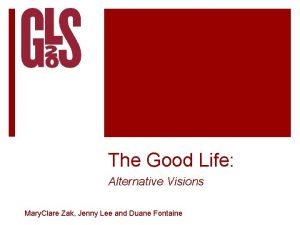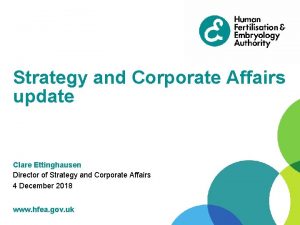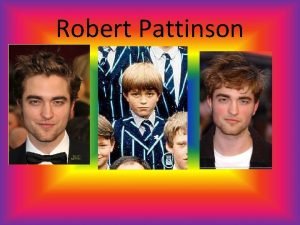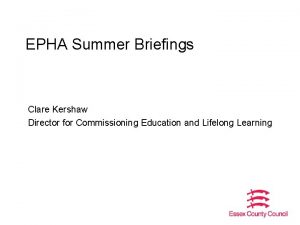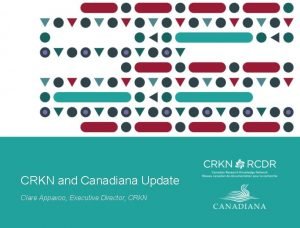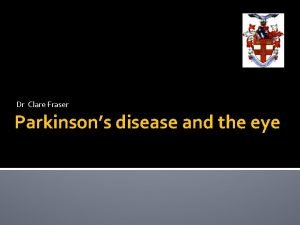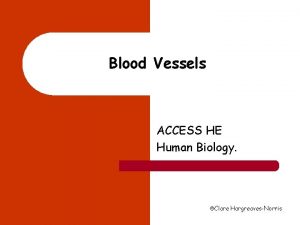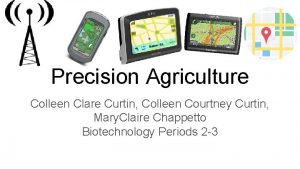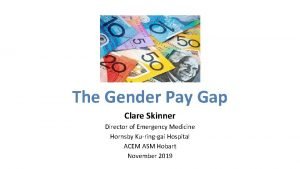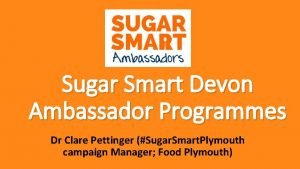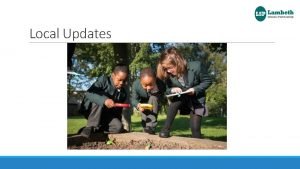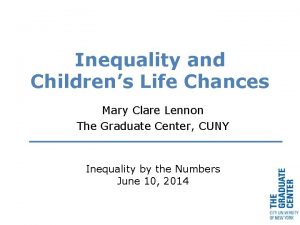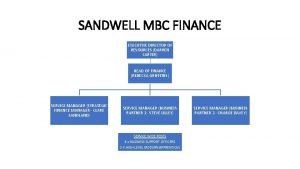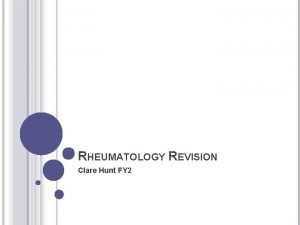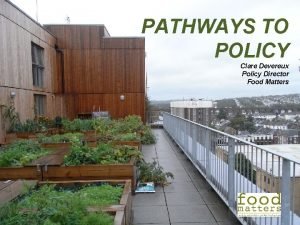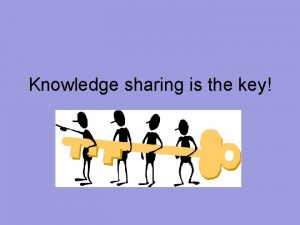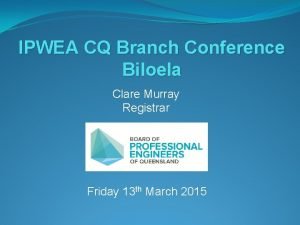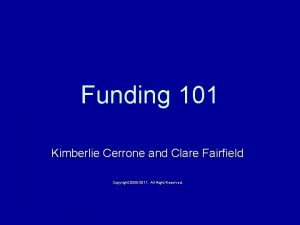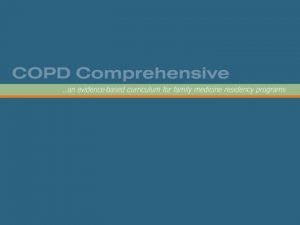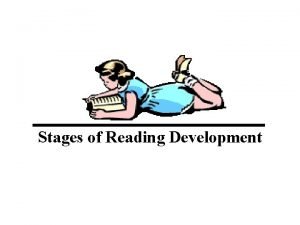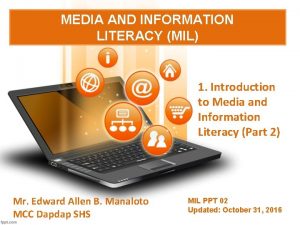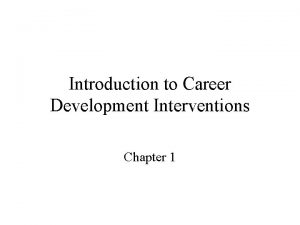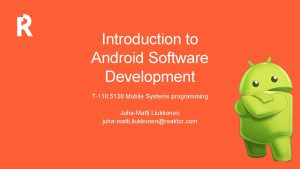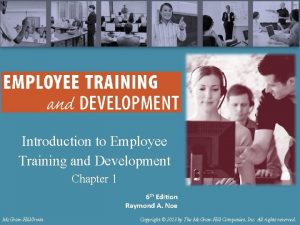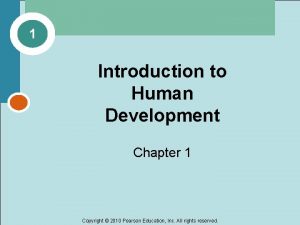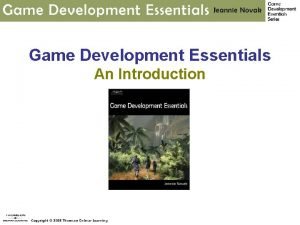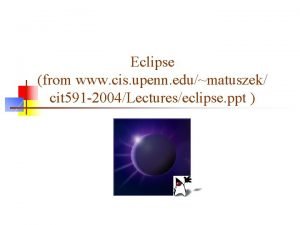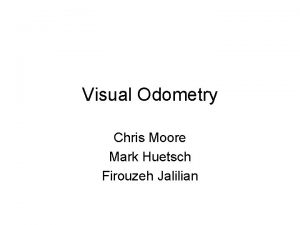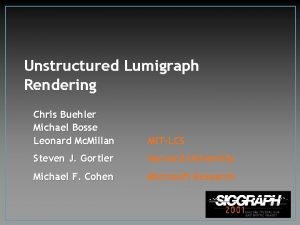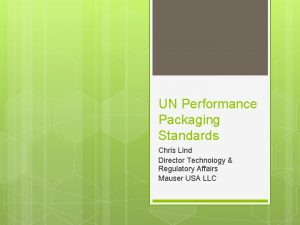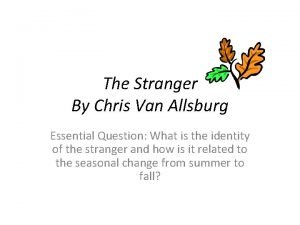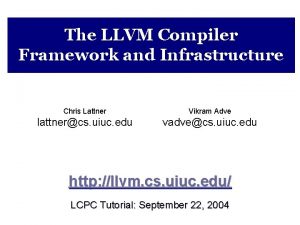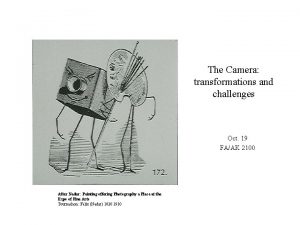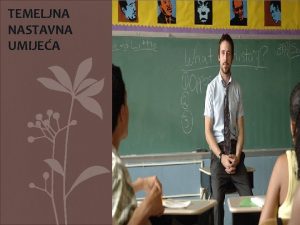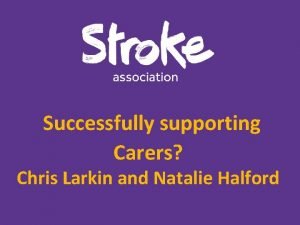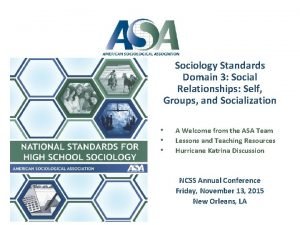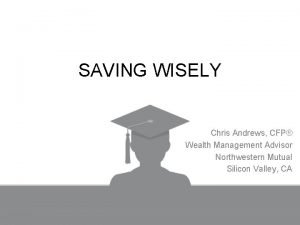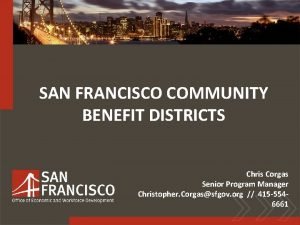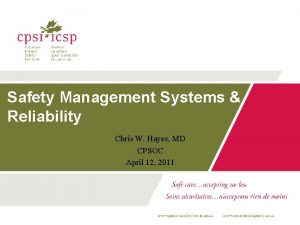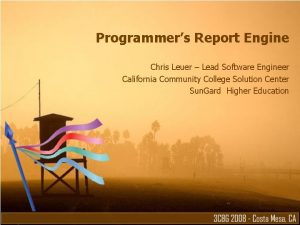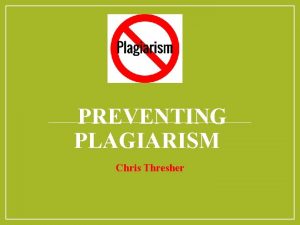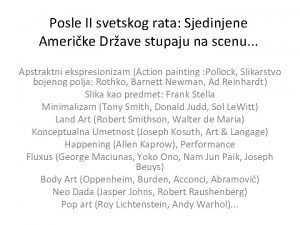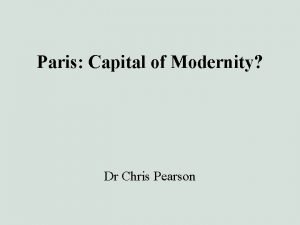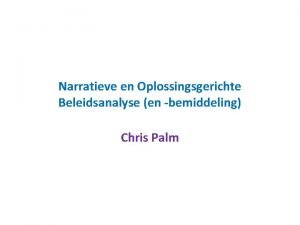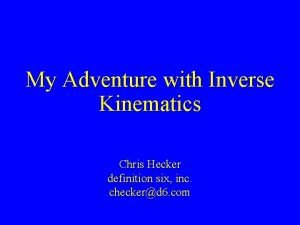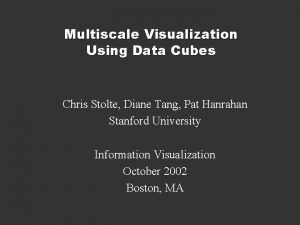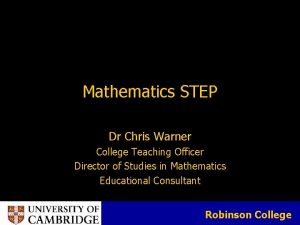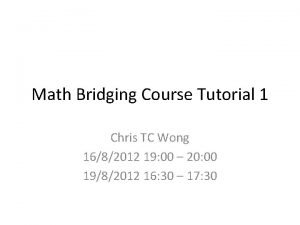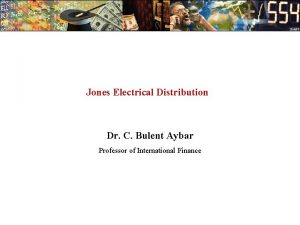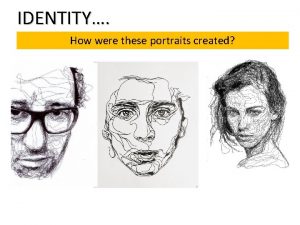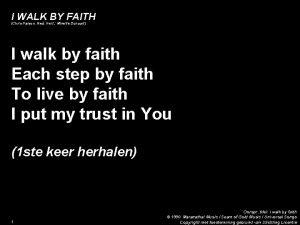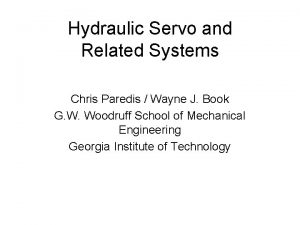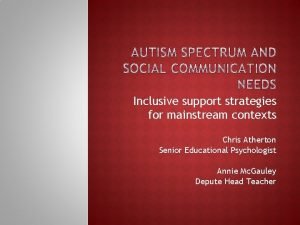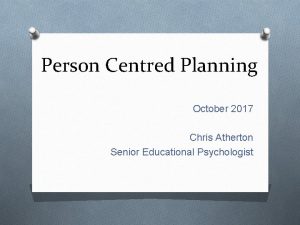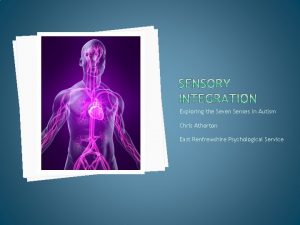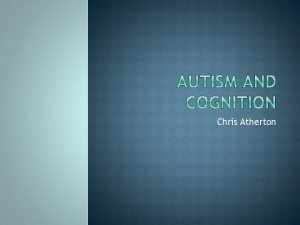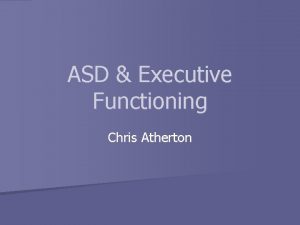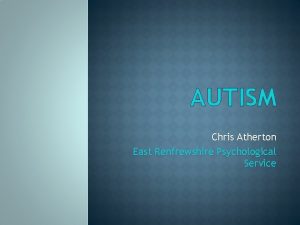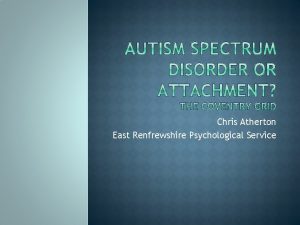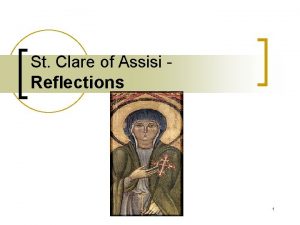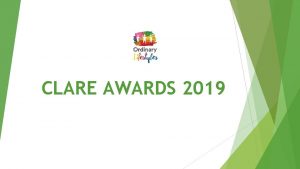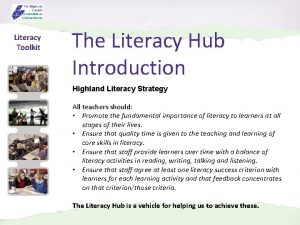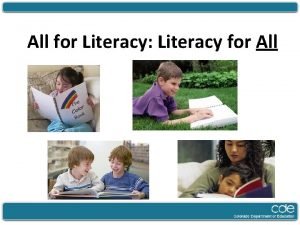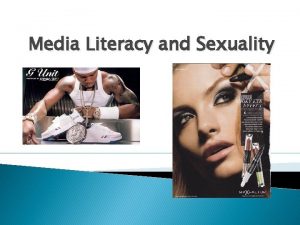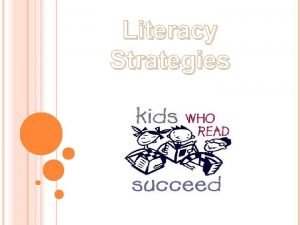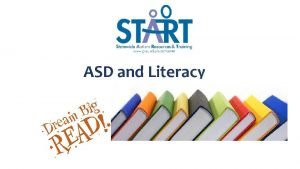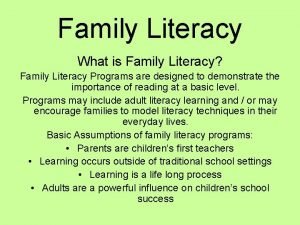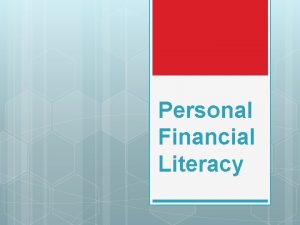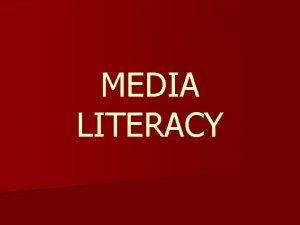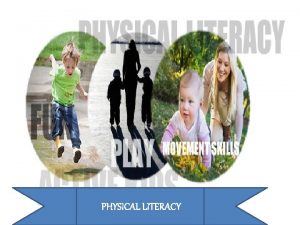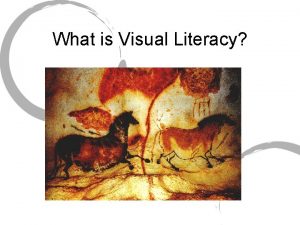An Introduction to Literacy Development Chris Atherton Clare















































































- Slides: 79

An Introduction to Literacy Development Chris Atherton Clare Creighton Chris Mc. Kee Senior Educational Psychologist Quality Improvement Officer Principal Teacher of Literacy St Luke’s High School St John’s Training Room, Barrhead 24 th January 2018

What is literacy? ‘the set of skills which allows an individual to engage fully in society and in learning, through the different forms of language, and the range of texts, which society values and finds useful. ’ Literacy and English, Principles and Practice, Pg 1, 2010

What is literacy? ‘Literacy is fundamental to all areas of learning, as it unlocks access to the wider curriculum. Being literate increases opportunities for the children in all aspects of life, lays the foundations for lifelong learning and work and contributes strongly to the development of all four capacities of Curriculum for Excellence. ’ Literacy and English, Principles and Practice, Pg 1, 2010

“We recognise without question that a strong, successful country requires strong and secure literacy skills. Literacy support unlocks learning in all other areas, is crucial for developing employability skills and is a prerequisite for full, informed and responsible participation in social, economic, cultural and political life. Without literacy skills, health and wellbeing can be seriously impaired, or even negated. ” Sir Harry Burns

Literacy Strategy • Improve the curriculum to help children and young people develop literacy knowledge and skills required for learning, life and work. • Enhance learning and teaching. • Improve partnership working. • Provide effective interventions for children who require targeted support.

Curriculum • Introduce an early years tracking database • Review the skills framework taking cognisance of the benchmarks • Develop an Adult Literacies Action Plan

Interventions • Introduce an Early Years Pupil Equity Fund (2017/2018) • Invest in training teacher leaders of Reading Recovery • Review ERC Dyslexia guidance and practice

Learning and Teaching • Deliver a Career Long Professional Learning Programme • Develop online resources to support the teaching of literacy • Implement an Individual Learning Planning approach for Adult Learners

Teachers, not programmes, make a difference

Rationale • Literacy is an essential prerequisite for: – – – – communicating in different ways and in different settings thinking critically and creatively learning independently and as part of a group making reasoned evaluations linking and applying different kinds of learning relating to others and managing themselves working in partnership and in teams solving problems Cf. E

What the research tells us • Literacy attainment is directly determined by; individual ability and motivation, teaching pedagogy and the class, school, family and community context (Ehri et al. , 2001; Camilli, Vargas & Yurecko, 2003; Rose, 2006; Torgerson, Brooks & Hall, 2006). • A rich, holistic reading programme and a well developed literacy environment for pupils is important (Lyon, 1998), and this can be supported where teaching and learning strategies vary to suit the needs of pupils (Smith and Ellis, 2005).

• http: //www. bbc. co. uk/news/education 41176329

The CN Tower

The Glass Floor • Children from more advantaged social backgrounds who are assessed at age 5 as having low cognitive ability are nonetheless significantly more likely to become high earners than their high ability peers in lower income households. • Children from high income backgrounds who show signs of low academic ability at age 5 are 35% more likely to be high earners as adults than children from poorer families who show early signs of high ability. www. gov. uk

The Glass Floor Pillar One: • More advantaged parents securing educational opportunities to help their children overcome lack of ability and overtake their more gifted but poorer peers by: – investing time and resources – providing better careers advice and guidance – placing a high value on polish and ‘soft skills’, such as selfconfidence, decisiveness, leadership and resilience – prioritising school choice, with more advantaged parents able to move house to be in the catchment area of a great state school, invest in private tuition or give their children a private education

The Glass Floor Pillar Two • More advantaged parents securing advantages for their children into the labour market that are unavailable to less well-off parents by: – helping their children into employment through informal social networks – securing informal and unpaid internships – investing in their children’s ‘soft skills’ which are highly valued in employment recruitment processes

• “It’s a social scandal that all too often demography is still destiny in Britain. The government should make its core mission the levelling of the playing field so that every child in the country has an equal opportunity to go as far as their abilities can take them. ” Alan Milburn Former Social Mobility Commission

The Human Brain • http: //www. bbc. co. uk/news/health-40488545

Experience Shapes Brain Architecture by Over-Production Followed by Pruning Birth 6 Years P. O. Svanberg Sept 2010 14 Years

Pruning

Stanislas Dehaene ‘Reading in the Brain’ • We are able to learn to read because we inherit from evolution an efficient object recognition system with enough plasticity to learn new shapes, and with the relevant connections to link these shapes to existing language areas. • The acquisition of reading slowly specializes many neurons of this region to create an efficient hierarchical visual word form system • We all learn to read with a similar brain architecture. Cognitive neuroscience data are therefore relevant for the teaching of reading. ’ • http: //developingchild. harvard. edu/resources/three-core-concepts-in-earlydevelopment/

Brain Functions P. O. Svanberg Sept 2010



The brain and behaviour: anatomy of a hijack FIGHT OR FLIGHT, FREEZE, RESPONSE: Heart rate and blood pressure increase. Large muscles prepare for action

Effective Parental Support Talk about the words around you (e. g. food names, labels, signs) Play ‘I spy’ Sing rhymes and songs together Ask for help with the shopping list Relate books to shared experiences Demonstrate a passion for reading Provide a rich and varied literacy environment Ensure a range of reading formats are available and attractive Regularly read a variety of novels to your child. Ask a balance of open and closed questions about stories.

Effective Parental Support • Build upon your children's interests • Encourage choice and provide opportunities for your child to develop a sense of control (autonomy) over their reading. • Intervene when your child experiences difficulties. • Regularly interact about books, build upon your child’s ideas, and utilise games and humour to foster their reading engagement.

Literacy Development Key Factors Vocabulary development • In Britain, children aged 5 from the poorest 5 th of society are approximately 11. 1 months behind their counterparts from middle income households, and 16 months behind those from the most affluent backgrounds (Sutton Trust, 2010) https: //www. psychologytoday. com/blog/the-athletes-way/201402/tackling-thevocabulary-gap-between-rich-and-poor-children Phonological Awareness • Broader awareness of sound, syllabification, patterns in sounds / rhyme / alliteration. Phonemic Awareness • smallest units of sound that you can hear in a word – isolation of sounds segmenting, blending, manipulating)

Literacy Development Key Factors • • • Concepts of print Phonics Fluency Comprehension and meta-cognition Engagement and Motivation Literacy rich environment

Rhyming Activity • • • There was a young(ish? ) man called Chris Who thought he’d give Wednesday a miss For in times gone before He’d been heckled a ‘bore’ By the staff who love taking the. .

TES Article 5 th January • Nursery rhymes teach children a range of speaking and listening skills: auditory discrimination concentration how to follow a story how to listen for a rhythm and a beat how to discriminate different sounds and to detect rhyming words.

TES Article 5 th January • Children who develop good speaking and listening skills early on will become stronger readers and writers than those who don’t. • You can’t learn phonics if you can’t discriminate sounds by ear. • You can’t be a good writer without an extensive vocabulary so…

TES Article 5 th January • They introduce literary devices: similes (the fleece that is “white as snow”) onomatopoeia (“pop goes the weasel”) alliteration (“sing a song of sixpence”) Poetry is all about sound

Promoting Early Literacy Development Talk Ask Read Rhyme Play Sing

Concepts of Print - Components Letter Word Punctuatio n Line Sentence

Concepts of Print - Organisation Front Back Content s Page Directio n

Concepts of Print - Details Title Author Synopsi s Illustrato r

Phonological Awareness • Foundation on which phonics and spelling is built. • Ability to hear and produce individual sounds in words (phonemes) • Prerequisite skill for children to: – learn to associate sounds with letters – manipulate sounds to blend words during reading – segment words during spelling

Phonological Awareness - Activities Languag e Games Stories Rhymes Songs Riddles

Phonological Awareness - Skills Alliteration Syllable Segmentatio n Rhyme Production Rhyme Recognition

Phonics • Phonics is the explicit teaching of the relationship between the letters (graphemes) of written language and the individual sounds (phonemes) of spoken language. • The aim of teaching phonics is to enable pupils to read and write independently. The teaching of phonics is distinct from the teaching of phonological awareness.

Phonic Approaches Synthetic Phonics: – breaking words down into their smallest units – teaching grapheme / phoneme correspondence – blending the sounds of these units to form words. Analytic Phonics: – breaking words down but not necessarily into the smallest units – teaching recognition of beginning and ending sounds – e. g. man, mat, map, can, pan, man. Multi-sensory techniques should be used.

Jolly Phonics – An Example of a Synthetic Approach

Chris Mc. Kee St. Luke’s High School

AIMS To revise recent data on attainment, specifically in reading. To share knowledge of professional inquiry in a real-life context. To use research evidence to enhance understanding of learning and teaching.

RECENT EVIDENCE • Speech, language and communication was the area returning most concern in the early years. • Downwards trend in percentage of pupils achieving “the expected Cf. E level relevant for their stage”. • Massive disparity between percentages of children achieving level three and children achieving level four by S 3. • SSLN data shows ‘majority of pupils doing well, ’ but they are not doing as well as they did in 2012.

DIRECTION OF TRAVEL

PROFESSIONAL INQUIRY

PLANNING Problem clearly identified, but this need not be the starting point of all inquiry processes. The problem/puzzle gives way to a question – this should be as general as possible in order to allow for the data to be as true a reflection. “What happens when…” “What happens when reciprocal teaching is used? ”

USING RESEARCH Fundamentally important. Difficult to access. Partnerships with Universities play a pivotal role in accessing up-to-date research – commercially available resources are limited in their scope.

ACTIVITY 1 Read the example from the journal and note down: 1. What the extract means. 2. What parts you have difficulty in understanding. 3. What makes these parts difficult to understand.

ACTIVITY 2 Read the example from the book and note down: 1) What the extract means. 2) What parts you have difficulty in understanding. 3) What makes these parts difficult to understand. Are there any differences?

READING ACTIVITIES: THE WHY AND THE HOW • Activity 1 focussed on decoding words. • Activity 2 focussed on decoding meaning. • This is where research identifies a gap in reading development. • “…the effect of word decoding has practically disappeared by the end of primary school, but for low achievers, the ability to fluently recognise words from print still makes a difference at the start of secondary…” • “low achieving adolescents seem underrepresented in research” (Van Steensel et al. , 2016)


CROSS-REFERENCED WITH VISIBLE LEARNING Hattie, J. (2011) Visible Learning (Part 1): Disasters and below average. You. Tube video, Available at: https: //www. youtube. com/watch? v=sng 4 p 3 Vsu 7 Y&feature=youtu. be (Last accessed 9 th March 2017). #63 Co-operative learning #43 Outdoor learning #42 Classroom Management #13 Meta-cognitive strategies #11 Teacher-student relationships #9 Reciprocal reading/teaching programme

GATHERING DATA Qualitative: word-based. Quantitative: test scores. “…if your audience is other teachers, they could also be interested in the attitudes of the learners and the impact on classroom behaviour that the change brought…” “…as long as you are answering your research questions and the evidence is meaningful in doing this, then most sources can be confirmed as research data…” (Baumfield et al. , 2008)

DATA GATHERED Quantitative Qualitative Test paper – two sittings; one before Pupil observation sheet using resource the reciprocal teaching project and one from Oczkus book. after. Compare and contrast results. Teacher reflective journal, responding to questions inspired by research papers. Pupil interviews.

THE RESULTS Visible improvements in motivation, engagement and participation. An improvement in test scores over two sittings of the same paper. Pupils said that the amount that they read independently had increased. A perceived improvement in pupils’ abilities to understand what they were reading. A perceived improvement in pupils’ behaviour while reading. Visible improvements in pupil confidence when reading.

THE WIDER IMPACT Classroom practice Personal capacity Interpersonal capacity “A school where collaborative enquiry is a way of life for staff is able to progressively transform both its practice and the type of organisation it is. ” (Jackson and Street, 2005) Learning community or learning organisation?

QUESTIONS?

REFERENCES - ONLINE Scottish Government (2016) National Improvement Framework for Scottish Education – 2016 Evidence Report Edinburgh: Scottish Government. Available at: http: //www. gov. scot/Resource/00511488. pdf Last accessed: 9 th March, 2017. General Teaching Council for Scotland (GTCS) (no date), Why Practitioner Enquiry? [Online]. Available at: http: //www. gtcs. org. uk/professional-update/researchpractitioner-enquiry/why-practitionerenquiry. aspx#risks (Last accessed 12 th July 2016).

REFERENCES - PUBLISHED Baumfield, V. , Hall, E. and Wall, K. (2008) Action research in the classroom. London: SAGE. Oczkus, L. D. (2010) Reciprocal teaching at work: Powerful strategies and lessons for improving reading comprehension (2 nd edition). Newark: International Reading Association. Van Steensel, R. , Oostdam, R. , Van Gelderen, A. and Van Schooten, E. (2016) ‘The role of word decoding, vocabulary knowledge and meta-cognitive knowledge in monolingual and bilingual low-achieving adolescents’ reading comprehension. ’ Journal of Research in Reading, 39(3): 312 -329

Visible Learning John Hattie: “effect sizes” are the best way of answering the question ‘what has the greatest influence on student learning? ‘ An effect-size of 1. 0 is typically associated with: • Advancing learners' achievement by one year, or improving the rate of learning by 50% • A two grade leap in GCSE, e. g. from a C to an A grade • An effect size of 1. 0 is clearly enormous! (It is defined as an increase of one standard deviation)

Normal Distribution

Calculating the Standard Deviation

What is an effect size?

Calculating the Effect Size

Zone of Desired Effects

Visible Learning • An effect size of 0. 5 is equivalent to a one grade leap at GCSE • An effect size of 1. 0 is equivalent to a two grade leap at GCSE • Number of effects is the number of effect sizes from well designed studies that have been averaged to produce the average effect size. • An effect size above 0. 4 is above average for educational research

Table of Effect Sizes Influence Effect Size Source of Influence Feedback 1. 13 Teacher Student's prior cognitive ability 1. 04 Student Instructional quality 1. 00 Teacher Direct instruction . 82 Teacher Acceleration . 72 Student Remediation/feedback . 65 Teacher Student's disposition to learn . 61 Student Class environment . 56 Teacher Challenge of Goals . 52 Teacher Peer tutoring . 50 Teacher Mastery learning . 50 Teacher Homework . 43 Teacher Style . 42 Teacher Questioning . 41 Teacher

Motivational Factors Intrinsic Environmenta l Extrinsic Motivatio n

This is the story of…

But that isn’t the full story…

Modes of Persuasion • Pathos – Emotional Appeal • Ethos – Ethical Appeal • Logos – Logical Appeal

Developing Motivation Opportunities Narrow Interest (e. g. Frozen) Disney Magic Fantasy Weather Singing Dancing Relationships Broader Interests Tinkerbell Ben and Holly Toy Story Paw Patrol Gruffalo Room on the Broom

Pupil – Teacher Alliance • Pupils and teachers share ownership of the learning process: – joint formulation of clear, achievable learning goals – teacher provides feedback on process (not just outcome) to highlight effort and strategies – learner and teacher experience successful learning through the interaction and sharing of ideas

Person Centred Planning • • • Highly individualised Focus on strengths, interests and needs Look beyond a ‘medical model’ People are more than their ‘diagnoses’ Take a holistic view Focus on achievements, goals and dreams

Person Centred Pathway

Ecological Systems • How can we improve our practice to develop literacy at the following levels: – Individual – School – Family – Community How can the school influence a cultural shift around the importance of literacy?
 Media literacy venn diagram
Media literacy venn diagram Media and information literacy picture analysis
Media and information literacy picture analysis Write pas for people as media and pin for people in media
Write pas for people as media and pin for people in media Cyber literacy for the digital age
Cyber literacy for the digital age Mary clare zak
Mary clare zak Clare ettinghausen
Clare ettinghausen Richard pattinson clare pattinson
Richard pattinson clare pattinson Clare kershaw
Clare kershaw Clare embling
Clare embling Crkn members
Crkn members Double vision
Double vision Clare hargreaves norris
Clare hargreaves norris Clare partridge
Clare partridge Dish curtin
Dish curtin Dr clare skinner
Dr clare skinner Clare pettinger
Clare pettinger Clare parnell
Clare parnell Clare dudman lambeth
Clare dudman lambeth Mary clare lennon
Mary clare lennon Dr clare taylor
Dr clare taylor Strategic finance
Strategic finance Clare fy
Clare fy Clare devereux
Clare devereux Clare scanlan
Clare scanlan Dr clare murray
Dr clare murray Clare fairfield
Clare fairfield Dr clare hawkins
Dr clare hawkins Clare madge
Clare madge Stages of literacy development
Stages of literacy development 5 stages of reading development
5 stages of reading development Media literacy cartoon
Media literacy cartoon What is the history of community development in tanzania?
What is the history of community development in tanzania? Development that ended much development crossword
Development that ended much development crossword Describe how sheet metal is used in pattern development
Describe how sheet metal is used in pattern development Career development interventions
Career development interventions Introduction to android development
Introduction to android development Physical development
Physical development Introduction to employee training and development
Introduction to employee training and development Nature of human development
Nature of human development Game development essentials an introduction
Game development essentials an introduction Curriculum development process in pakistan
Curriculum development process in pakistan Cit 591 introduction to software development
Cit 591 introduction to software development Essay structure
Essay structure Otokratik yönetim
Otokratik yönetim Chris archer v new columbia
Chris archer v new columbia Uwb biology degree checklist
Uwb biology degree checklist Chris huetsch
Chris huetsch Chris buehler
Chris buehler Chris rpcl
Chris rpcl The stranger chris van allsburg
The stranger chris van allsburg Llvm chris lattner
Llvm chris lattner Chris mazepink
Chris mazepink Jeff wall photography
Jeff wall photography Chris kyriacou
Chris kyriacou Chris yano dui
Chris yano dui Chris larkin stroke
Chris larkin stroke Chris salituro
Chris salituro Chris andrews northwestern mutual
Chris andrews northwestern mutual Chris corgas
Chris corgas Chris hayes md
Chris hayes md Chris delfausse
Chris delfausse Chris leuer
Chris leuer Whats the definition of plagiarism
Whats the definition of plagiarism Slikarstvo obojenog polja
Slikarstvo obojenog polja Dr chris pearson
Dr chris pearson Chris palm
Chris palm Chris hecker
Chris hecker Chris stolte
Chris stolte Chris van allsburg biography
Chris van allsburg biography Chris van allsburg biography
Chris van allsburg biography Dr chris warner
Dr chris warner Dse chris wong
Dse chris wong Chris norman zyciorys
Chris norman zyciorys Chris waterman
Chris waterman Allergie phadiatop positief
Allergie phadiatop positief Jones electrical distribution
Jones electrical distribution Biodata speaker
Biodata speaker Chris trappeniers
Chris trappeniers I walk by faith chris falson
I walk by faith chris falson Chris paredis
Chris paredis




